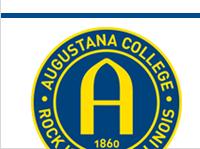Course
BIOL-464 Senior Inquiry: Biological Literature
Document Type
Student Paper
Publication Date
Spring 5-20-2016
Disciplines
Biochemistry | Biology | Biomedical Engineering and Bioengineering | Biotechnology | Community Health and Preventive Medicine | Genetics | Genomics | Immunity | Immunology and Infectious Disease | Immunology of Infectious Disease | Immunopathology | Immunoprophylaxis and Therapy | Infectious Disease | International Public Health | Medical Genetics | Medical Microbiology | Medicinal Chemistry and Pharmaceutics | Medicine and Health Sciences | Microbiology | Molecular Biology | Molecular, Cellular, and Tissue Engineering | Molecular Genetics | Pharmaceutics and Drug Design | Public Health
Description, Abstract, or Artist's Statement
ABSTRACT: The HIV-1 pandemic continues to thrive due to ineffective HIV-1 vaccines. Historically, the world’s most infectious diseases, such as polio and smallpox, have been eradicated or have come close to eradication due to the advent of effective vaccines. Highly active antiretroviral therapy is able to delay the onset of AIDS but can neither rid the body of HIV-1 proviral DNA nor prevent further transmission. A prophylactic vaccine that prevents the various mechanisms HIV-1 has to evade and attack our immune system is needed to end the HIV-1 pandemic. Recent advances in engineered nuclease systems, like the CRISPR/Cas9 system, have given rise to novel gene editing treatment options for HIV-1. In this proposed study, the CRISPR/Cas9 system was used alongside the ALVAC vaccine to determine whether the vaccine combination can effectively cleave HIV-1 DNA and prevent HIV-1 infection in mouse epithelial cells in the cervix in-vivo. This vaccine not only has the potential to immunize individuals but can also have therapeutic effects. It is hypothesized that the CRISPR/Cas9 plasmid will be successfully expressed inside most, if not all, cervical epithelial cells and the subsequent Cas9/gRNA activity will cleave all HIV-1 DNA encountered.
Augustana Digital Commons Citation
Garcia Martinez, Omar A.. "HIV Vaccines: Progress, Limitations and a CRISPR/Cas9 Vaccine" (2016). Biology: Student Scholarship & Creative Works.
https://digitalcommons.augustana.edu/biolstudent/4
Included in
Biochemistry Commons, Biology Commons, Biotechnology Commons, Community Health and Preventive Medicine Commons, Genetics Commons, Genomics Commons, Immunity Commons, Immunology of Infectious Disease Commons, Immunopathology Commons, Immunoprophylaxis and Therapy Commons, Infectious Disease Commons, International Public Health Commons, Medical Genetics Commons, Medical Microbiology Commons, Medicinal Chemistry and Pharmaceutics Commons, Microbiology Commons, Molecular Biology Commons, Molecular, Cellular, and Tissue Engineering Commons, Molecular Genetics Commons, Pharmaceutics and Drug Design Commons
